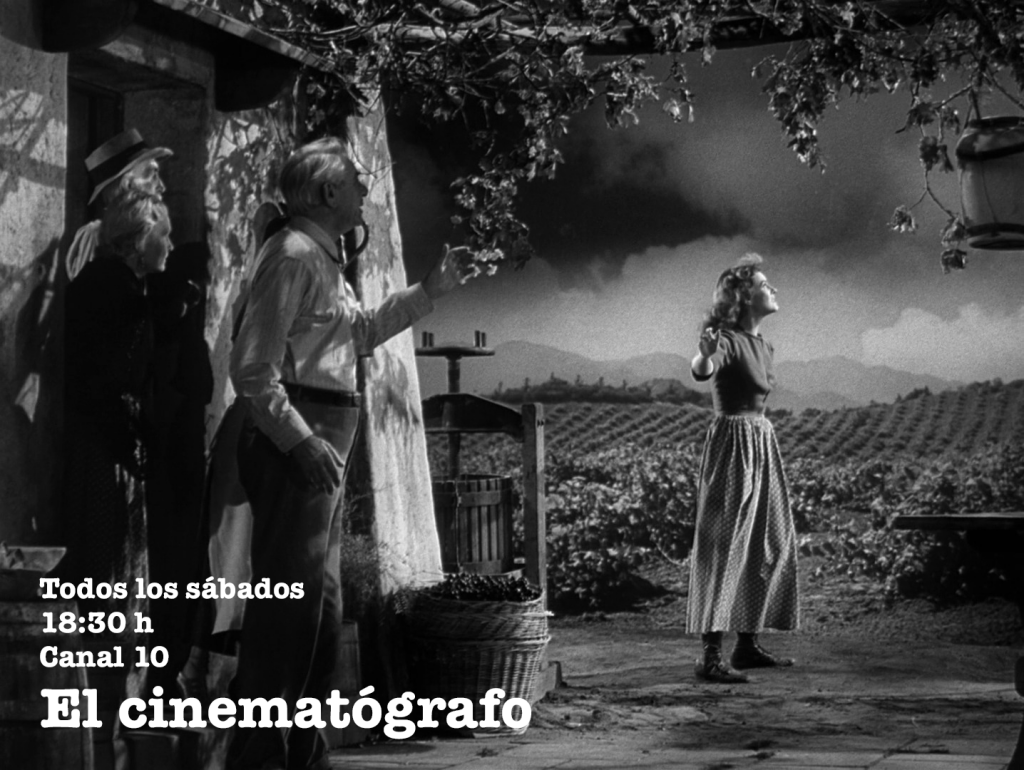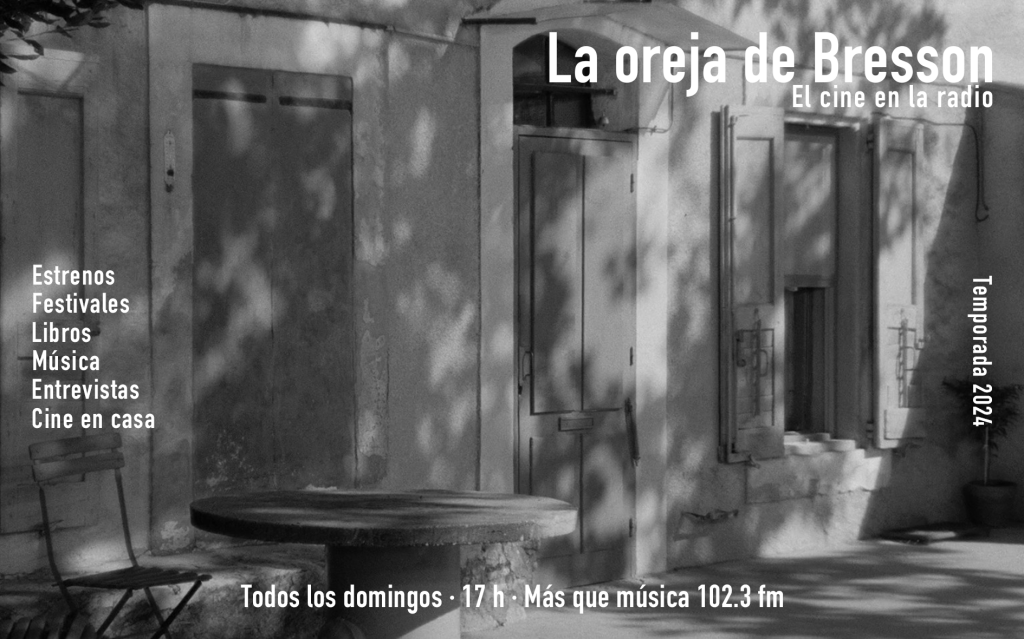
El asombro
By Roger Koza
The title of this section is a distorted loan from a great film by Alexander Balaguara, whose title is “Lapses of life of an object in the frame”. The Ukranian director’s film runs for almost two hours but, to some extent, secretly sums up the obstacle faced by any filmmaker working with what is defined as a short film: the time for each shot is marked by the short duration of the whole. Indeed, a short film is, by definition, a film whose essential limit is, prior to anything else, structural, since it is assumed that the total duration of its interior existence is restricted. To a maximum of 20, 30, even 40 minutes, even though the more orthodox festivals set the defining limit for a short film at half an hour.
The reasons that lead a filmmaker to work under this time restraint are unknown. In the beginning, as we all know, that happened due to an impediment in the technology itself, but since a few years back, the extension of a film is no longer a problem. So, why continue to encourage brevity? A thesis, an indication, a policy of this author: a film must run for as long as it needs to run.
For different reasons, I have been for many years a juror in an Argentinian national short film festival called Cortópolis (“Shortcity”). On four consecutive editions, they changed the other jurors but kept inviting me. Repetition is a theme that fascinates me, and because of that, I accepted the role time and again, because I knew that repetition makes us think on certain things and eventually build a few hypotheses. I was also a juror at a Latin American short film festival and, recently, I even accepted to judge a mobile phone short film festival. All of these experiences have led me, with no exception, time and again, to realize a permanent tension in films with short runtimes, namely: there is always a secret conflict between an order of advertising that, in its essence, feels obligated to produce an effect, and an order of film, that pressures and demands that the filmmaker refine, in a short time, an idea of cinema. Most of the time, short films are, formally, advertising in disguise. Not of merchandise, but of the syntax and and the way through which merchandise conquer their target: by becoming an object of consumption.
When we think that all of Artavazd Pelechian’s films are short films, excepting Nosso Século (Our Century), those who wish to make films with a brief runtime already know that anything is possible and that in a few minutes one can make the language of film go delirious, and elevate it to heights of expression never before imagined. There are no excuses: a 10-minute film can be as striking as any “brief” 4-hour film by Lav Diaz.
All the films chosen are important for different reasons. In almost every instance, I could see that the director sought out something, sensed some kind of cinematic form and, in some cases, conceived and designed a meaningful idea of cinema. The themes chosen are different, even though I have attempted either clashes or thematic and aesthetic empathy among the films. Overall, I believe it’s possible to point out some issues in contemporary cinema as whole and Argentinean cinema in particular.
I suspect it won’t take long to find out that, among the films in the exhibition, there is one of German origins. De la necesidad de navegar los mares (Of the need to sail the seas) is a short film by Philipp Hartmann set in Bolivia and Argentina. I have decided to include this film for two reasons. On the one hand, Hartmann’s film belongs to a tradition of film: he takes up the spirit of adventure of Flaherty, Van der Keuken and Herzog. For all of them, to film is to travel, to move, to seek others. A camera not only captures a moment in order to reproduce it later; it is also an instrument that incites movement. It’s about searching for unknown images in distant lands. On the other hand, Hartmann’s gaze is that of a foreigner who observes a symbolic and physical space that Argentinean (and Bolivian) filmmakers might not be all that interested in shooting. For the few minutes when the action is set in Buenos Aires, the city seems different.
The works chosen are by celebrated, well-known, and also unknown filmmakers. Some films could be considered “professional”, and others, “amateur”. If I have chosen them paying no attention to diplomas and awards they might have received, it is because I feel that the worth of each and every one lies in the formal and thematic diversity that so well represents contemporary Argentinean cinema.
When appointing and restricting myself to one country’s filmmaking, I would like to clearly state my position as a programmer (and film critic): I have no interest in nationalism itself and its relationship to film, which does not imply denying the issues of identity that yes, may be seen in a specific region’s cinema. I clarify this point simply because cinephilia has always been an heterodox way of thinking about the world, as if cinema were an “additional” country (as Serge Daney liked to put it), dislocated away from linguistic and territorial sovereignty. That said, I believe most films are rooted in a specific context, and that is exactly why they are able to transcend their own territory in order to embody a universal interest.
***
First Section: Sketches on a Microphysics of Power

La reina
La reina, Manuel Abramovich, Argentina, 2013
A lucid and enlightening film about the asymmetrical relationships between adults and minors. During Carnival, the obsessive preparation of a preadolescent queen for her next parade synthesizes the place of power. The opening scene all but leaves out of the field of vision the adult faces, and sustains the beautiful image of Nemi, whose sole pleasure seems to be playing with her friends in a pool. (RK)
No sé María, Paula Grinzpan, Argentina, 2014
A striking portrait of loneliness in today’s society. Maria, a seamstress who lives alone, gets a call from an operator who, at a certain point, apologizes for his treatment of her. This anonymous voice loses impersonality when Maria asks his name and he answers: Fernando. The media report the suicide of a Fernando who worked at a customer call center. Grinzpan transforms an anecdote into a piece of sociological evidence of a state of mind.
Sociales, Mariano Luque, Argentina, 2013
A film student puts himself through school by shooting weddings and other social events. The film’s central environment is the interaction between the student and his boss, a paradigm character of work relations nowadays: the “buddy-boss”. The employee’s submission and the employer’s pleasure are evident with the sharpness of a state-of-the-art microscope. The micro-physics of power in images.
El modelo, Germán Scelso | Espanha, 2012
Shortly before the crisis in Spain, Scelso filmed a man who lives in the streets of Barcelona and who used to regularly visit the phone company where the director worked as a teller. The film simply shows the daily interaction between the filmmaker and his “model”, who embodies the consequences of the economic system. The person chosen is largely the quintessence of a system, an ontologic and economical off-camera of it. Scelso’s cinema is usually restricted to the portrait and, in this case, his method of inquiry reaches its finest aesthetic distillation: the images themselves have a marginal texture, in line with his protagonist. Filming the homeless demands a precise ethics, but Scelso often politically suspends the morality in the face of a true politics of experience. His method is usually disturbing, the result, ruthless; and that is why the perversion of a system may be laid bare.
***
Second Section: Poetics Shifts in Film Narrative

Que caigo?
El asombro, Santiago Loza, Iván Fund Y Lorena Moriconi , Argentina, 2014
As if it were a sequel to the last 15 minutes of AB, directors Fund and Loza, now with Moriconi, radicalize the aesthetic process of their previous film together. On the one hand, there is a free text, something between poetic and philosophical, spoken off-camera by two men and one woman; on the other hand, a set of shots in different ecosystems, animals living and dissected, clouds, waterfalls, and lava, organized by a kind of poetic logic, according to the visual matter. The separation between text and image is programmatic and, at the same time, constitutes a form of free poetic expression. The precariousness of existence is evident and the composition of images itself is in accordance with this empirical finding. The general discourse fluctuates between a heterodox Franciscan Christianism and a sensitive Darwinism and, in the same way, conjugates with a kind of consciousness of terror and astonishment before the universe.
Sin título, Lisandro Alonso, Argentina, 2010, 23’
“Untitled” is the answer to a first letter shot by Serra, with a runtime of two and a half hours: “El señor ha fet en mi meravelles” (“The Lord has done great things to me”). The setting is familiar: the Liberdade woods. What we first see is a long shot of a clearing in the woods. A slight and almost imperceptible movement holds in the frame until a hunter appears. He aims, prepares his shotgun; his prey is not seen, but two shots are heard. Soon the hunter disappears from the frame and Misael Saavedra appears. The lumberjack incessantly calls out a name: Jersey. In what appears to be a dry brook or perhaps an old trail in the woods, it appears first a white dog, and then, a young man who reads a short story about dogs, soldiers, and barbarians. 6 shots, 23 minutes, an exceptional film.
Que caigo?, Eduardo Williams, Argentina, França, 2013
An aerial shot of a market that reminds one of an exotic location in a James Bond movie is the first thing on screen. In an ellipsis, two friends move in the dark. Then, the protagonist walks with a friend and, without any notice, is back walking in the jungle, but with other friends. The jungle looks like a pedestrian zone. Is it a dream? Williams’s surreal cinema is absolutely singular.
***
Third Section: Ways of Looking at Space

Ahora es nunca
Hábitat, Ignacio Masllorens | Argentina, França, 2013, 40’
This essay on objects and urbanism, two words whose concrete referents are inevitably associated with man, works with recordings fundamentally sustained by aerial and long shots of buildings (banks, hospitals, private residences, universities), squares, streets, terraces and machines, where a particular habitat is explored when entirely devoid of visible (and, for the most part, audible) human presence. Human life remains off camera, even though indirectly almost everything refers to this talking animal prone to building cities. The city chosen is Buenos Aires; seen without men or women, it is easy to associate the human absence to an imaginary apocalyptic landscape where there are only pigeons, dogs, and cats left, even though the greatest strangeness lies in watching the existence of objects and public spaces dislocated from their obligatory daily function.
De la necesidad de navegar los mares, Philipp Hartmann, Argentina, Bolívia, Alemania, 2010,
Lubitsch said in order to film people one had to learn first how to film mountains. In several occasions, the staging of this film by Phiipp Hartmann, its structure, goes back and forth from open shots of mountains to medium shots of people; at some point there is a casual yet pertinent dialogue about the existential quality of people who live in the mountains. De la necesidad de navegar los mares is set in an isolated land in southern Bolivia, in the North of Argentina, and in Buenos Aires. A likely alter-ego to Mr. Hartmann is in charge of organizing the discourse during the journey, and though geographer and naturalist Alexander von Humboldt is a conceptual character and the rest are ghosts that appear and interact with the old geographer, there is also a sort of genealogic obsession throughout the philosophical tale that gives structure to the film. In this mesmerizing, mysterious, dreamlike and beautiful flick, Hartmann films as if he were walking; not because travelling shots are the main choice for the composition of scenes, but because it seems as if filming were an activity analogue to travelling for him or the other way round; in order to travel, it is necessary to film. Evidently, Hartmann feels an acute interest for those spaces which have no images yet and this links him to the film tradition of Werner Herzog, an imaginary grandparent for this filmmaker. Indeed, the idea is going after still virgin spaces without a movement-showing representation of them; but he also stops to reflect on the duration and the substance of movement and that is to say time: “an instant is a piece of frozen time. ”Hartmann offers a lucid and yet playful game between film register as a carrier of memory and edition as a manipulation of shared memories, an indirect reflection on the ontological statute of the image —all of this, in 22 minutes.
Ahora es nunca, Pablo Acosta Larroca, Nicolás Aponte, Argentina, França, 2014
Acosta Larroca’s and Aponte’s intuition in this film lies in conceiving the public space as a potential setting for cinema and the act of looking as a behavior marked temporally by cinema. In addition to an exchange of looks between two young persons and the curiosity of a boy about a girl, the recording of the streets and trains is surprising in “Now is Never”, a film that has the perfect duration in each shot.
* Life Spam of an objet in frame is in fact the real title of Balagura’s film, which has been changed by the festival translator.
Roger Koza / Copyleft 2014






Últimos Comentarios